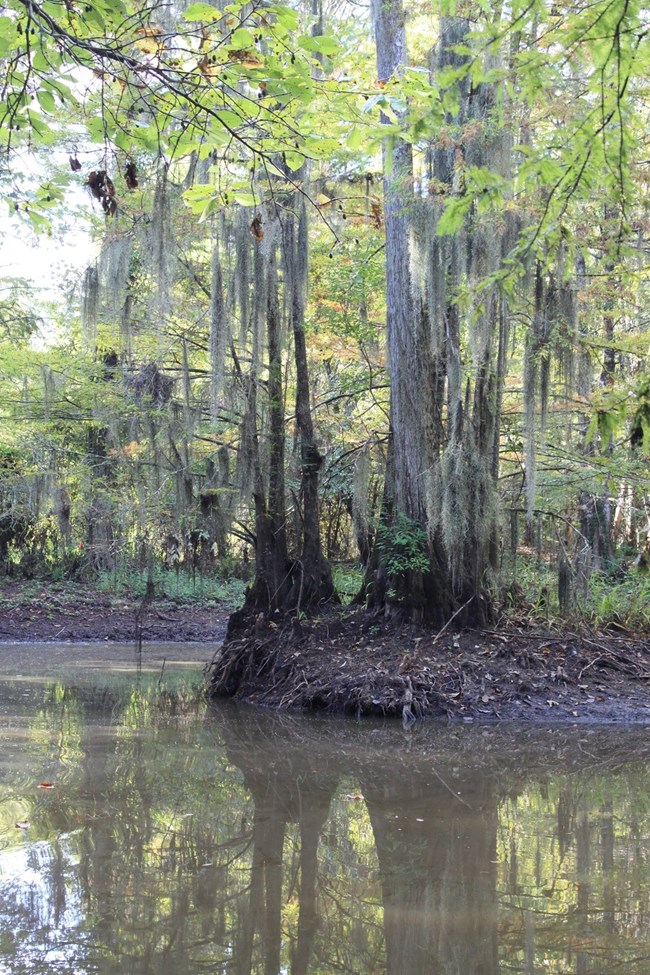Learn about NRCAs
The Natural Resource Condition Assessment (NRCA) Program provides framework, funding, and publishing support to parks to aid in the synthesis and documentation of natural resource conditions. Condition assessment reports are a tool to describe selected park resources, and record a snapshot of their current condition, identify trends, and identify potential or current threats and stressors. Understanding the condition and trend of natural resources is key for parks and NPS planners to appropriately prioritize and allocate stewardship resources.

NPS Photo.
The abundant rainfall and the long growing season, around 246 days per year, ensures that the vegetation and animal life thrive in this unique area of Texas. The Preserve now includes over 113,000 acres scattered in nine land units and six water units. This diverse habitat allows an impressive array of species to coexist, including approximately 1,320 species of trees, shrubs, vines, and grasses (vascular plants), 60 mammal species, 86 reptile and amphibian species, 34 species of freshwater mussels, nearly 1,800 invertebrate species just in the Lepidoptera Family (butterflies, moths, skippers), 97 fish species, and at least 300 bird species.
Traditional NRCA Report: 2016
In an effort to better understand the natural resources and processes within Big Thicket National Preserve, a Natural Resource Condition Assessment was written and published in 2016. This assessment was a collaborative effort between the National Park Service and St. Mary’s University of Minnesota. This team focused on 15 resource topics to be evaluated:
- Fire regimes |
- Birds |
|||||
- Pine uplands |
- Amphibians and reptiles |
|||||
- Slope forest |
- Harvested mammals |
|||||
- Arid sand hills |
- Freshwater mussels |
|||||
- Longleaf pine wetlands |
- Freshwater fish |
|||||
- Floodplain hardwood forest |
- Water quality |
|||||
- Estuarine wetlands |
- Air Quality |
|||||
- Hydrology |
Based on this assessment, the conditions of these resource varied within Big Thicket National Preserve. Five resources were given a condition of moderate concern: fire regime, birds, harvested mammals, freshwater mussels, and water quality; four resources were given a condition of significant concern: pine uplands, arid sandhills, air quality, and hydrology; and the remaining six resources were not assigned a condition rating due to lack of current data.
Many of the resources discussed in this report are interrelated and share similar management concerns, including threats from outside the preserve and climate change impacts. the preserve supports a variety of natural resources, includes portions of some of the most unique and pristine habitats, and represents one of the largest and last protected portions of the Texas Big Thicket. Although the National Preserve is impacted and fragmented by adjacent human activities and infrastructure, by protecting portions of the unique habitats and river/creek corridors, the preserve still provides a glimpse into the historic Big Thicket of this region.
Many of the resources discussed in this report are interrelated and share similar management concerns, including threats from outside the preserve and climate change impacts. the preserve supports a variety of natural resources, includes portions of some of the most unique and pristine habitats, and represents one of the largest and last protected portions of the Texas Big Thicket. Although the National Preserve is impacted and fragmented by adjacent human activities and infrastructure, by protecting portions of the unique habitats and river/creek corridors, the preserve still provides a glimpse into the historic Big Thicket of this region.
For other reports and natural resource datasets visit the NPS Data Store.
Source: NPS DataStore Collection 7765 (results presented are a subset). To search for additional information, visit the NPS DataStore.
Last updated: February 25, 2022
